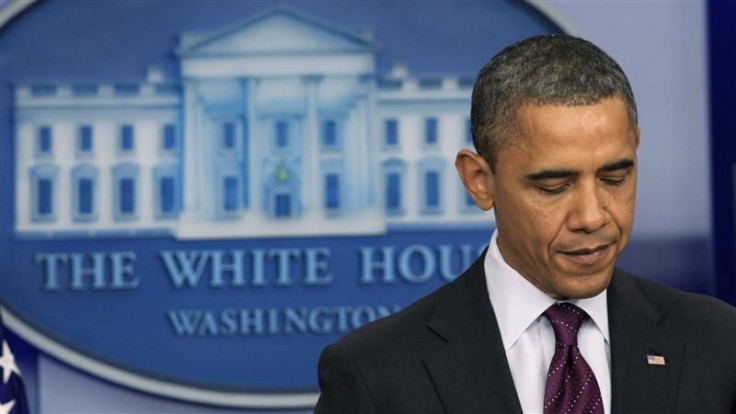Obama Defense Budget Puts More Focus on Asia

(REUTERS) - President Barack Obama unveiled a defense strategy on Thursday that calls for greater U.S. military presence in Asia and envisions cutting troops in Europe as the Pentagon seeks to reduce spending by nearly half a trillion dollars after a decade of war.
Obama, in a Pentagon news conference alongside Defense Secretary Leon Panetta, released a strategy document that calls for the United States to maintain a force that can win one war while still having the capability to deter the objectives of an adversary in a second conflict.
That is a shift away from the military's often repeated goal of being able to fight and prevail in two wars in different theaters simultaneously.
The strategy also calls for the U.S. military to rebalance toward the Asia-Pacific region even as it continues to actively counter the threat of violent extremism.
Even as our troops continue to fight in Afghanistan, the tide of war is receding, Obama said at the news conference. Even as our forces prevail in today's missions, we have the opportunity - and the responsibility - to look ahead to the force we need for the future.
Our nation is at a moment of transition, Obama wrote in the introduction to the strategy, which also calls for increased investment in cyber capabilities and suggests the United States may be able to shrink its nuclear arsenal further without jeopardizing security.
The shift in focus to Asia comes amid increasing concern at the Pentagon over China's strategic goals as it begins to field a new generation of weapons that could prevent U.S. naval and air forces from projecting power into the Far East.
Obama initiated the strategic review last summer after asking the Pentagon to begin planning for major cuts to the U.S. defense budget after a decade of growth. The strategy is meant to identify U.S. strategic priorities and guide defense spending as the military begins to cut back.
Obama and Congress agreed in August to reduce projected national security spending by more than $450 billion in the next decade. They also agreed on automatic spending cuts that could slash another $600 billion from the Pentagon budget unless Congress agrees on an alternative.
The strategy document released on Thursday addressed U.S. interests in broad brush-strokes but did not get into specifics about how many troops would be reduced or deal with specific budgetary issues.
But administration officials speaking before the roll-out of the strategy on Thursday said Army and Marine Corps personnel numbers would be cut by 10 percent to 15 percent in the next decade, a figure that translates into tens of thousands of troops.
The strategy underscores the United States' enduring interests in Europe and the importance of the North Atlantic Treaty Organization but says the force posture in Europe must evolve with the changing times.
Administration officials have said the United States is likely to further reduce the number of ground forces in Europe by another combat brigade, a unit of 3,000 to 4,000 people depending on its composition.
The strategy document underscores a U.S. interest in maintaining stability in the Middle East while responding to the aspirations of the people as expressed in the Arab Awakening last year. It also says the United States will continue working to halt nuclear programs in Iran and North Korea.
U.S. policy will emphasize Gulf security, in collaboration with the Gulf Cooperation Council countries when appropriate, to prevent Iran's development of a nuclear weapon capability and counter its destabilizing policies, the strategy document says.
The document expresses concern about new weapons being developed by China and Iran that could make it difficult for the United States Navy and Air Force to project power abroad.
The United States must maintain its ability to project power in areas where our access and freedom to operate are challenged, it says.
(Additional reporting By Laura MacInnis, Andrea Shalal-Esa and Matt Spetalnick.)
© Copyright Thomson Reuters 2024. All rights reserved.





















